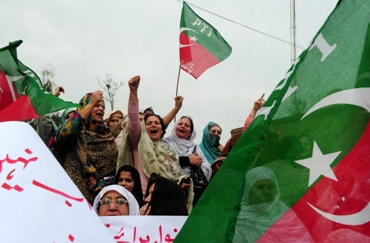In the midst of a tense bilateral dispute between the U.S. and Pakistan over the case of Raymond Davis—an American Embassy employee who shot and killed two armed Pakistanis in what he claims was self-defense—civil society leaders from both countries met in Lahore, Pakistan, February 17-19. The initiative, dubbed the U.S.-Pakistan Leaders Forum, was convened by the U.S.-Muslim Engagement Initiative (a non-governmental, non-partisan collaboration of four U.S.-based organizations) and hosted by the Lahore University of Management Sciences, a world-class educational institute started in 1985 by Pakistani industrialist Syed Babar Ali.
During the meetings, in which I had the honor to participate, think tank experts, NGO activists, educational leaders, and agricultural experts sat down, rolled up their sleeves, and generated ideas for closer collaboration between the two countries in areas such as media education, scaling up community peace-building efforts, increasing academic collaboration at the university, primary, and secondary levels, and developing agriculture partnerships that would bring farmers together in hands-on collaborative endeavors.
One outcome of the engagement was to highlight the immediate need to recalibrate the U.S.-Pakistan aid relationship. The U.S. has provided more than $6 billion in economic assistance to Pakistan over the last nine years, but representatives from both countries complained that there was very little to show for it. For instance, a $75 million U.S. grant for teacher training was badly mismanaged and virtually wasted. All agreed there were serious structural problems in the way U.S. aid is delivered that need immediate attention.
A recent GAO report on U.S. civilian assistance to Pakistan recommends several steps to improve the monitoring and accountability of U.S. aid to Pakistan, including requiring Pakistani organizations that receive contracts or grants to implement a conflict of interest policy, recruit more qualified internal audit and procurement staff, embed approved CPA staff, and participate in a capacity-building program.
Some Pakistani youth called for more job-generating public-private partnerships, saying “send us your skilled people, not just your money.” They viewed the public-private Punjab Rural Support Program as a potential model for future U.S. aid programming.
Role of Media
Much of the discussion also centered on the role of the media —both in the U.S. and Pakistan—in shaping perceptions (and misperceptions) about the other side. Most participants agreed that the Pakistani media were increasingly biased in reporting on the U.S. and guilty of churning out a steady diet of anti-American conspiracy theories and rhetoric. While some journalists and editors admitted they sometimes “self-censored” because of unspecified pressures, they also said their newspapers and satellite TV stations were largely responding to the public mood.
Participants also criticized U.S. media coverage of Pakistan, indicating that the U.S. tended to cover only negative news in Pakistan and that the coverage was often shallow and one-dimensional. Furthermore, American media tended to show a general lack of understanding of the local drivers of conflict in Pakistan and a mischaracterization of the role of religion in the conflict. U.S. audiences generally see a secular-religious divide as driving the conflict in Pakistan, when the ground realities are much more complex.
Davis Case Looms Large
The Pakistan media frenzy over the Davis case has driven anti-American sentiment to dangerously high levels. The Jamaat-i-Islami organized a rally last week in which protesters shouted down America and burned effigies of Davis. The Davis case has the potential to severely damage ties, if not handled carefully.
The U.S. is adamant that Davis has diplomatic immunity and was acting in self-defense, but the Zardari government is weak and feels it has little choice but to follow the public mood. Further complicating the case is the high level of tension between the countries’ intelligence services. Several media reports indicate Davis may have been involved in a clandestine operational act and that the Pakistanis killed may have been ISI surveillants.
The Davis incident has proved to be a watershed in the complicated U.S.-Pakistan relationship. It may take time for tempers to cool and a decision to free him to come. In the meantime, hopefully initiatives like the U.S.-Pakistan Leaders Forum will help build greater understanding and trust at the societal level that will eventually form the foundation for a strong and lasting, mutually beneficial partnership between Pakistan and the U.S.
Source material can be found at this site.










